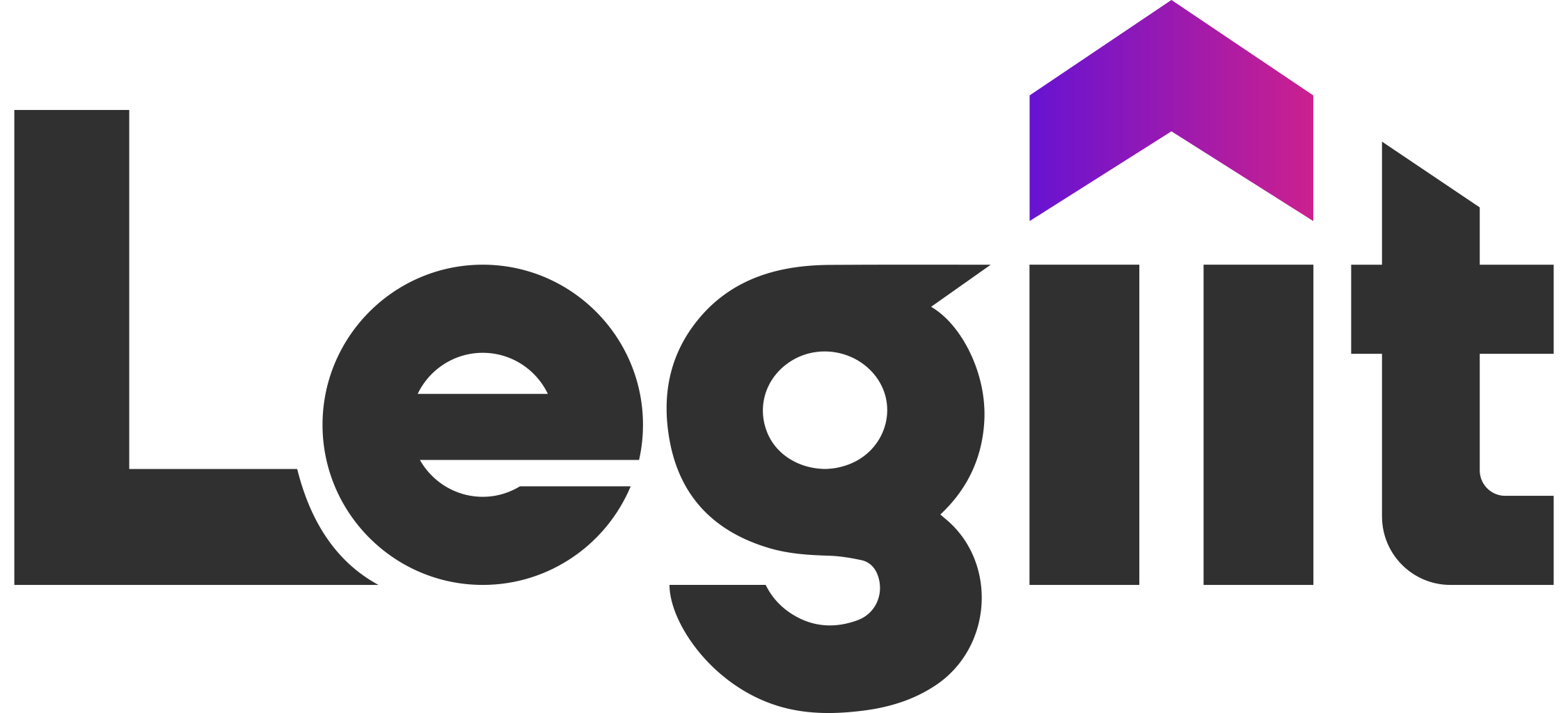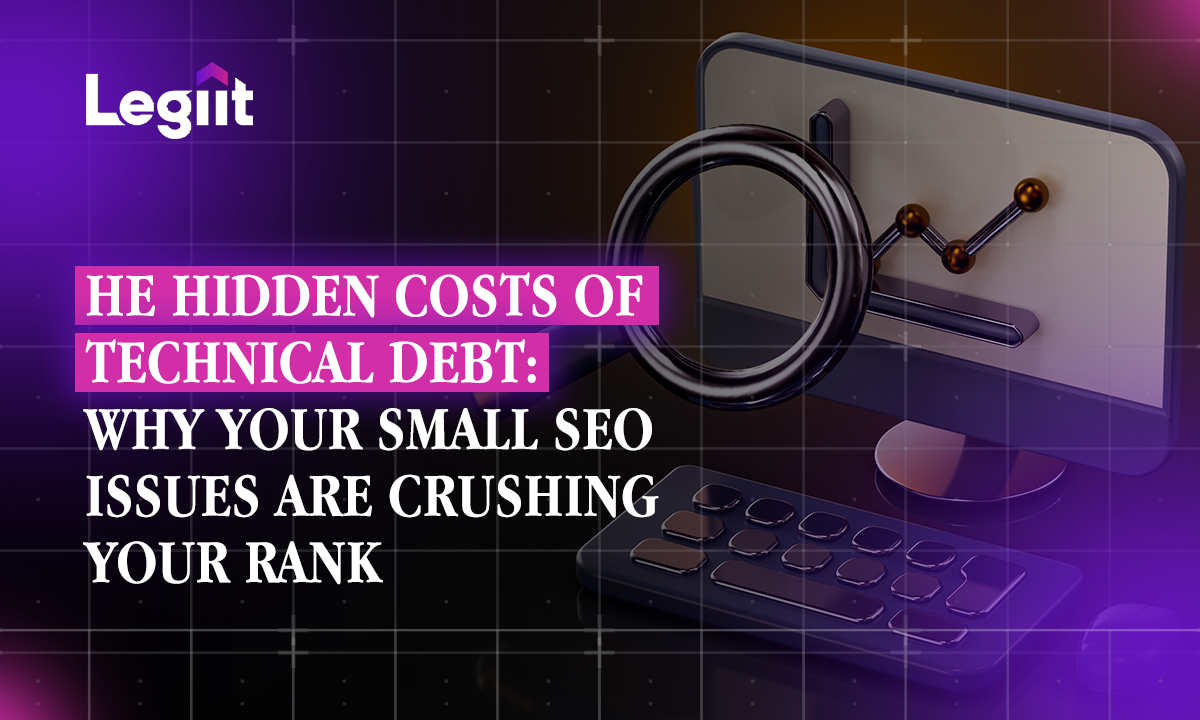In the past, SEO campaigns were often based on intuition and best practices.
However, the current business environment has made it mandatory for businesses to have robust strategies for their SEO campaigns.
But coming up with a strategy is one thing, and selecting the right and most effective strategy is another—you need to assess your environment (competition, your audience, and key business resources) and then match and apply the right strategy.
If you’re building an SEO strategy, it’s also important to know that it won’t be instant. It’s a gradual process—at least if you do it right.
In this article, we’ve handpicked for you the top 10 essential yet effective website optimization strategies that you can use to win for your business in 2024 and matched them with the right SEO tool to use in the process.
By the end of this article, you’ll be able to make a dinner date with your audience and a send-off bouquet for your competitors.
Ready to learn? Let’s get started.
Website Optimization Guide Step-By-Step
Getting the right website optimization can be quite a hassle—but we’ve made it easy for you. Here are some of the steps you can follow to boost and maximize your SEO campaigns for free:
1. Fulfill the search intent in your content.
Search intent is the first and perhaps the most important part of SEO because it tells you the intention behind your customer's searches on the internet using a given keyword.
So, it's important to try and figure out the urge behind the keyword that you’ve selected in your content—without doing so, your SEO is dead.
For instance, according to Think With Google, 76% of people who search on their smartphones for something nearby visit a business within a day.
Therefore, if you own a local business about which you’re writing content, you should provide your audience with content that resonates with their intention—and most importantly, help them complete the action they’re trying to take.
Additionally, search intent is the primary reason why Google keeps refining its algorithms. Their goal is to serve the right, relevant, and helpful search results to internet users; therefore, if your content does not serve the search intent, you’re most likely to lose exposure and key rankings for your target keywords.
There are 4 most important types of search intent, which also form the buyer's journey.
- Informational—This includes phrases such as how, what, who, where, tutorials, tips, resources, learn, and examples, among others.
- Commercial—They include best, top, comparison, attribute of a product, review, and pricing, among others.
- Navigational—They include brand names, the name of a product, and the name of a service, among others.
- Transactional—They include phrases like buy, coupon, order, purchase, cheap, price, and [city] type of store, among others.
That’s why, as a marketer and SEO professional, you need to understand what part of the buyer’s journey your customers are at when they type in a specific phrase—and serve them with the right content.
You can fulfill the search intent using the “3 C's of search intent,” which include determining and aligning your content either through content type, content format, or content angle.
Now that we’ve figured out how to fulfill the search intent, we’re good to go to the next section.
2. Technical SEO—Build an SEO-friendly site architecture
The ultimate goal of website optimization is to help attract website visitors who will become customers, clients, or an audience that keeps coming back.
One of the strategies you can use to keep them coming back is to optimize your website with a user-friendly site architecture that ultimately enhances their experience, otherwise known as "technical SEO."
If your website cannot be crawled and indexed by search engines, we’ve got news for you—you’re wasting resources, and Google cannot show your website in the search results. You want to make it easy for search engines to locate all the content on your pages.
Additionally, search engines such as Google have been stressing the importance of pages that load quickly and provide a good user experience. A recent study found that faster sites tend to rank higher in search results, while 88.5% of visitors leave a website because of slow loading times.
It’s best that you monitor your website’s uptime and speed—if your website is loading slowly or goes down frequently, you need to take action—quickly and fast.
The technical elements that matter here are:
- Use a simple URL structure
- Create an intuitive navigation menu
- Build internal links
- Core Web Vitals
- Create sitemaps
- Implement breadcrumbs
- Eliminate keyword cannibalization
- Map out your site taxonomy
- Mobile-friendliness
- Usability
- Schema
- HTTPS
- Avoiding intrusive interstitials
It’s important to note that this strategy requires a flexible approach to optimizing every aspect of technical SEO as the need arises.
At the end of this article, we’ll reveal to you an SEO tool you can use to boost your website's friendliness. So pay close attention until the end.
3. Improve the quality of the user experience
User experience, or UX, involves how a user interacts with a system and is a central part of good website design. It’s about how visually appealing it is, how easy it is to use, and how enjoyable it is to navigate.
Today, if internet users encounter a bad experience while navigating through your site, they won’t come back again. According to a report, 88% of online consumers are less likely to return to a site after a bad experience.
That’s why it’s essential to have strategies in place to enhance their experience; otherwise, your competitors are already doing it.
Why is it so? SEO is responsible for leading people to the webpage, whereas UX takes over to either make their journey comfortable or stressful. Therefore, improving the quality of the user experience will directly increase time spent on the site, reduce bounce rates, and increase the number of pages visited.
To improve the quality of the user experience, you need to focus on improving the menu design, page speed, URL structure, and mobile responsiveness.
For this, you can hire an experienced user design expert and get improved user-engagement metrics, increasing brand credibility, search ranking, and audience retention.
This brings us to the next section, mobile-first optimization; let’s take a look.
4. Emphasis on Mobile-First Optimization
As technology continues to evolve, your digital marketing strategy needs to evolve with it. Within the past few years, the use of mobile phones for Internet purposes has increased dramatically.
That’s why close to 50% of web traffic comes from mobile searches. This means a website that isn’t mobile-responsive loses over 50% of its audience from the beginning.
Why is it so? Today, companies with mobile-optimized websites are likely to triple their chances of increasing the mobile conversion rate to 5% or more.
In order to take advantage of the best possible online presence, you must optimize your site for many different types of devices and screen resolutions.
So, how can you make your site mobile-friendly? There are a few straightforward strategies.
- Make sure all content is the same on desktop & mobile
- Use responsive design techniques
- Customize WordPress for mobile
- Check your site on multiple operating and display systems
- Mobile video best practices
- Use schema.org structured data that can be translated into rich snippets in the mobile search results.
- Image compression and optimization
- Optimize the overall page size
If you haven’t yet made the jump to mobile-friendly sites, why not get started today?
5. Improve core web vitals
These are sets of standardized metrics from Google that help developers measure and evaluate the speed, responsiveness, and visual stability of websites—offering them more real-time opportunities that, if improved, can boost rankings.
They make up the following 3 measurements: largest contentful paint, first input delay, and cumulative layout shift.
Why are core web vitals important? Google has a plan to make the user experience a major part of the ranking factors; therefore, the more user-friendly your site is, the higher your chances of ranking, and certainly the core web vitals play a major role here.
If you want to find your site’s Core Web Vitals data, go to the “enhancements” section of your Google Search Console account.
Let’s take a look at how you can improve the three main metrics of core web vitals:
(A) Largest Content Paint
LCP is the time taken for a page to load from the point of view of an actual web user.
The LCP speed is further broken down into three categories: Good, Needs Improvement, and poor, and here, the lesser time taken to load (let’s say 0.5 seconds) is better than that of 6 seconds, which is poor and needs adjustments.
Here are some things you can do to improve your site’s LCP:
- Remove any unnecessary third-party scripts
- Upgrade your web host
- Set up lazy loading
- Remove large page elements:
- Minify your CSS
(B). First Input Delay (FID)
This aspect involves the time it takes for a web user to actually interact with your page through actions such as choosing an option from a menu, clicking on a link in the site’s navigation, and entering an email into a field.
Here are some things you can do to improve your site’s FID scores.
- Minimize (or defer) JavaScript
- Remove any non-critical third-party scripts
- Use a browser cache
C). Cumulative Layout Shift (CLS)
This factor involves how stable a page is as it loads, also known as "visual stability."
Here are some simple things you can do to minimize CLS.
- Use set size attribute dimensions for any media (video, images, GIFs, infographics, etc.).
- Make sure ad elements have a reserved space.
- Add new UI elements below the fold.
Websites with “good” Core Web Vital scores can earn higher search rankings than sites with “poor” Core Web Vitals; be sure to utilize the strategies laid out above if you are not already doing so.
6. Add a Schema Markup to Create Rich Snippets
We talked about this strategy early on as a factor, but in this section, we’ll have a more in-depth look to understand the hidden meaning behind adding schema markup to your site.
Why is Schema markup important in SEO? It informs the search engine precisely what your content is trying to convey on your web page by converting unstructured data into structured data.
According to studies, websites with schema markup rank an average of four positions higher in the SERPs than those without schema markup—although schema markup isn’t the sole factor here, there is some rich correlation.
Why? Schema helps the search engine crawl better, raising the website's ranking. Additionally, Google will display your content as a rich result on the SERP and include extra information about a given page, such as ratings and reviews of local businesses.
Generally, the benefits of adding schema markup include:
- Help search engines better understand your content
- Control how your brand appears in search
- Drive business results through increased click-through-rates
- Answering common questions or providing product insights on the results page
Let’s take a look at how to use schema markup for SEO.
1. Go to Google’s Structured Data Markup Helper.
2. Select the Type of Data
3. Paste the URL you want to markup.
4. Select the elements to markup.
5. Continue Adding Markup Items.
6. Create the HTML.
7. Add Schema Markup to Your Site
8. Test your Schema markup.
This is a simple SEO strategy that most businesses (and probably your competitors) are not using; doing so right away will put you ahead of the curve, giving you a leg up on the competition.
7. Content Marketing—Create a content hub in the form of a resource center
If you produce a product or service that you don’t market, how will people know about it?
Content marketing is a key strategy in website optimization because it helps spread sought-after organic content using your website in an engaging, valuable way, thereby increasing the number of high-quality backlinks—a ranking factor.
Think of it this way, if you’re running a business and you have your website (which is already following the above 6 strategies) but it does not have content on it, how are search engines going to find you and serve your website in the SERPs?
Impossible right?
If you want to have organic search visibility, rankings, and traffic, you have to commit yourself to creating SEO-optimized content.
“Content builds relationships. Relationships are built on trust. Trust drives revenue.”
Here’s everything you need to know about creating killer content in 3 simple words:
- Clear.
- Concise.
- Compelling.
Google has provided a comprehensive guideline for optimizing your content for search rankings that you need to self-assess.
They categorically say that your website needs to present helpful, reliable information that's primarily created to benefit people, not to manipulate search engine rankings in the SERPs.

Source: Google
The guideline above by Google suggests that you need to create a resource center that will keep people coming back to your site. To do so, here are some of the strategies you can use.
A). Setting goals for your campaign in the strategy
To move away from empty phrases, you need to match each of your content ideas to measurable values, such as.
- What value does this content add?
- Where will you publish this piece?
- What is the level of expertise of your target audience?
- What will make this content different from the competition?
B). Conduct audience-demand-based research
The easiest way to bring the information about your prospects together is to create a buyer persona profile based on their:
- Professional/personal goals (beliefs and values).
- Pain points and challenges (obstacles and fears).
- Impactful factors and information sources (favorite events, influencers, and media).
- Purchasing process anatomy (purchase frequency, decision-making process, etc.)
- Are they desiring to learn “how to’s” or “where to”?
The better you know your audience, the better you'll be able to write for them. Give them something that speaks to their unending needs.
C). Brand-based-storytelling plot development
Integrating your brand story (and message) into your content will help you stand out from the clutter.
Consequently, it will make a prospect want to find out what’s next and become motivated to build a lasting relationship with you.
D). Format a content-audience-based funnel
Each piece of content should be created with the need to trigger action in mind.
That is why it is important to determine which, where, and how to insert a Call To Action (CTA) in the content and on the site.
E). Thought leadership content creation
Finding topics and keywords is a common routine for content creation. There are dozens of ways to do this (which depends on your niche, audience, and competition) to create content that is better than your SERP competitors.
- Researching your competitors
- Surveying your customers, and analyzing their customer support/sales questions.
- Looking at popular Google queries.
- Using advanced SEO tools
F). Develop a demand-based content calendar
After determining how many pieces of content categories or formats are needed to address the needs of a prospect, we move on to how much effort will be needed to produce them and suggest timelines.
Lastly, once you have your pieces of content published, it is time to start promoting them by building backlinks and repurposing your evergreen content into different content formats that your audience will find interesting to use and share.
Repurposing your content allows you to reach an audience that might have missed your content the first time around—strengthen your brand's messaging, and give your content an SEO boost.
For instance, you can repurpose a blog post into an infographic, video, or presentation, and vice versa.
Also, focus on sharing content that naturally creates conversation. Some of those ways are to:
- Give shout-outs to other companies you network with and work with.
- Solicit feedback about your products.
- Ask open-ended questions, then let the audience reply to get them actively involved.
With a successful content strategy, you can establish trust and build credible authority in your industry and beyond. Remember to approach content marketing with SEO guidelines, as discussed before.
Finally, content marketing is not about those expensive and elaborate campaigns—you might have heard of.
It’s often about creating content that appeals to and attracts your target customers, then promoting it—nothing more, nothing less.
Go for it.
8. Build quality backlinks
SEO has moved away from building tons of “garbage” backlinks to building quality backlinks.
Today, it is better to have one quality backlink than thousands of backlinks that look spammy before the lens of Google—and it takes time.
Google sees backlinks as votes of confidence from other sites that are vouching for the content on your site as helpful, relevant, informative, and engaging; otherwise, those sites won’t have any business linking back to you.
This is important because most top-ranking pages get “followed” backlinks from new websites at a pace of +5%-14.5% per month, so if you build backlinks for your content and rank it, it opens up a chance to get backlinks freely from other sites.
Once you publish your content, you need to try and give it a boost by building backlinks—a top-ranking factor for search engines.
However, building backlinks is quite a hassle—especially when doing outreach. Recent studies found that the average cost of buying a link is $361.44, while the average cost of publishing a paid guest post is $77.80.
That’s why, in the previous section, we emphasized the need to build a resource center or content hub for your site through content marketing. That way, through the high-quality and helpful content you publish, you’ll be able to attract natural links.
In summary, to get high-quality backlinks in 2024, you can:
- Become a source for reporters and bloggers.
- Publish “skyscraper” content.
- Build links from outdated resources.
- Use content formats proven to generate links.
- Publish the ultimate guides.
- Use branded strategies and techniques.
- Authority resource pages.
The most outspoken strategies to build backlinks include:
- Guest posting
- Building PBNs
- Internal links
- Digital PR, among others
Ultimately, it’s important to build backlinks for your site—and most importantly, do it right in the light of Google's lenses.
9. Test and document changes
“Change is like rest," or so they say. While you’re making efforts to boost your website's optimization, it is important to test and document the changes that come as you implement different strategies.
SEO testing allows you to make changes to your website and measure the impact on organic search traffic or rankings.
Why should you run SEO tests?
- See what works for your website
- Justify resource allocation
- Be data-driven, not opinion-driven
- Make sure changes won’t backfire
To run an SEO test, follow these seven steps to get started.
1. Form a hypothesis
2. Choose your pages
3. Pull a random sample
4. Decide on the test duration
5. Decide how to track test results
6. Make the changes
7. Check the results
This brings us to the next section—how to track and analyze your SEO campaign’s KPIs—and we’ll look at how the Legiit GMSD dashboard can help.
10. Track And Analyze Your SEO Campaign’s KPIs Using The Legiit GMSD Dashboard Free SEO Tool
Tracking and analyzing your SEO campaign's KPIs is easier said than done.
Starting the process can be overwhelming—many technical terms, checklists of tens of tasks to do, learning resources contradicting each other—and the list goes on.
So many great SEO tools are available to help you analyze an SEO campaign’s KPIs and come up with a more effective strategy. The Legiit GMSD dashboard is by far one of the most powerful SEO tools on the market, and it’s the one I like the most.
Here are some of the things you can track.
1. Keyword tracking
2. Google analytics integration
3. Built-in uptime monitor
4. On-page content optimization audiit
5. Page speed tracking
6. Backlink data
7. On-page SEO information
8. Project tracking
9. Accurate Ai recommendations
10. Talent recommendations
11. Overall site score
To start using the Legiit Dashboard for free, sign up on our Legiit website. You can also join our Legiit Official Facebook Group and the SuperstarSEO Facebook Group for networking, support, and building relationships with peers.
You can also download our free ebook, "Unlocking the Power of Legiit GMSD Dashboard," to learn more about how this transformative tool can help you.
Here are more resources that can help you get started.
GMSD Dashboard on Legiit.com
Setting Up Your 1st Campaign on GMSD Dashboard
Connecting Google Analytics to the Legiit.com Dashboard
Using Audiit On-Page SEO in the GMSD Dashboard
Final Thoughts
That’s a wrap. Website optimization remains pretty important in 2024—and the strategies we’ve discussed above are super important in giving you a leg up on the competition.
Unlike a temporary fix, these strategies empower businesses and brands who want to create an impact online through website optimization—and the Legiit GMSD dashboard offers you a chance to transform how you will carry out the SEO campaigns.
Once in place, your life will be transformed—no more long struggles on what to do, no more struggles on ranking on the SERPS, and no more struggles on engaging your audience.
Do yourself a favor and just focus on these 10 website optimization strategies. Make a long-term commitment that creates long-term results and success.













 Download
Download